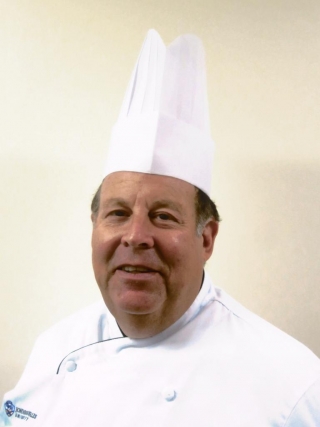
A Craft Butcher’s Workshop
02 December 2015A meat fabrication workshop reminds Chef Lazar of his past while teaching students important skills for the future.
By Chef Alan Lazar CCE, M.Ed., Johnson & Wales University, North Miami, Florida
The meat industry has been in a silent revolution that is getting louder every day. More and more people are calling for locally sourced meat and the meat industry is happily answering those calls.
According to the 2015 National Restaurant Association culinary forecast survey among nearly 1,300 American Culinary Federation chefs, locally sourced meats and seafood is the 2015 top food trend. Number five on the survey was natural ingredients and number six were new cuts of meat. There has been a tremendous amount of farm to table, locally sourced butcher stores and restaurants opening every day. This trend seems to be continuing in cities such as New York City, San Francisco and Miami as well as other trend-setting areas.
An opportunity to teach my Johnson and Wales students the art of meat fabrication arrived when we received a side of grass-fed Angus beef from Florida Fresh Meats in Summerfield, FL. Owner Jan Costa mentioned to me at a culinary meeting that he would like to sponsor a beef workshop for our students to cut and taste a local beef still on the bone. The steer weighed 550 lbs. and was cut into forequarter and hindquarter sections and dry aged for 28 days. It brought back memories of the old days before we had boxed meat and plastic bags. Bringing it into our meat lab and hanging it up was an event.
Several students attended the workshop and learned about farm to table beef fabrication. It took us four hours to cut, package, label and store all the beef. We noticed the beef did not have very much fat, which was good because we are paying for the protein keeping in mind that intramuscular or marbling fat does add flavor. The aging of the beef provided a nice flavor, which is a big change from a store-purchased, grain-fed beef.
The steer weighed 550 pounds and after trimming and tasting we had 490 pounds left which was an 89% yield. We calculated the cost of the steer was $6.74 per pound. A nice price for this Florida angus that had been dried aged.
The workshop reminded me of the beef I grew up with in Brooklyn many years ago. My family owned Kosher butcher shops in the New York City area from the 1960s to the 1990s. That was where my grandfather, Paul Lazar, would cut skirts steaks to judge the intramuscular fat of the animal. My family operated some of the largest and most profitable shops during that time.
It was fun to return to those memories for a few minutes while fabricating the beef. We smelled the freshness and saw the true color of cherry-red meat as opposed to just opening plastic bags of meat. The students thoroughly enjoyed this workshop with one student heading out west to cut meat in Wyoming. (You can’t get better than that with so much cattle and bison out there!) The beef is a little more expensive because of the handling, feed and processing but these are choices we make in life. Of course, it all comes out on the plate! You know what they say – taste beef, it’s what's for dinner.
Click here to see Chef Lazar’s Lesson Plan on turning a side of beef into primal cuts.
Alan Lazar was hired by Johnson & Wales University in North Miami, Florida, in 1994. He is member of the Greater Miami Chapter of the American Culinary Federation and has worked in many venues and at several special events held around the state. In 2013 he was named Johnson & Wales University in North Miami Advisor of the Year. He is an ACF Certified Culinary Educator designee and earned his Approved Culinary Evaluator. Chef Lazar also has completed his class from the Cattlemen’s Association’s Masters in Beef Advisory.
